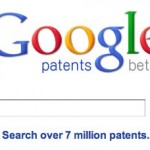 Patent professionals can do a better job providing patentability review, or "opinion," services for innovators. As most readers would recognize, a patentability review assesses whether the invention to be claimed will meet the legal requirements for patentability. In the US, this entails an assessment by a patent attorney, which can be based on a formal or informal search, whether the client’s invention is novel and non-obvious over the prior art. The rules by which a patent attorney makes a determination of patentability are well-established and would not be considered controversial by most experienced practitioners. Nonetheless, as an IP Strategist who works exclusively with clients engaged in developing and delivering meaningful innovations to consumers, I know that these entrenched patentability assessment practices deserve retooling for those clients who can be classified as "innovators." To this end, I believe that the way the patent
Patent professionals can do a better job providing patentability review, or "opinion," services for innovators. As most readers would recognize, a patentability review assesses whether the invention to be claimed will meet the legal requirements for patentability. In the US, this entails an assessment by a patent attorney, which can be based on a formal or informal search, whether the client’s invention is novel and non-obvious over the prior art. The rules by which a patent attorney makes a determination of patentability are well-established and would not be considered controversial by most experienced practitioners. Nonetheless, as an IP Strategist who works exclusively with clients engaged in developing and delivering meaningful innovations to consumers, I know that these entrenched patentability assessment practices deserve retooling for those clients who can be classified as "innovators." To this end, I believe that the way the patent
Patentability Reviews for Innovations
Enhancing Innovation ROI by Adding Patents at the Front End: Some Resources
 A new client has asked for some information on how consideration patents and IP at the front end of the innovation/product development process can enhance business value. Readers of this blog might find this material informative, also.
This is a published article from Innovation Management article entitled "How to Improve Innovation ROI with Early Stage Patent Expertise." In this article, I discuss how IP can help orient innovation teams in a direction that can enhance value capture. Practical steps to implement such a program into innovation processes is included in this article.
Here is a YouTube video that explains my process simply. In short, including IP at the front end of a company's innovation process allows one to enhance their calibration with respect to the IP rights of others to better ensure that they will achieve the desired ROI on
A new client has asked for some information on how consideration patents and IP at the front end of the innovation/product development process can enhance business value. Readers of this blog might find this material informative, also.
This is a published article from Innovation Management article entitled "How to Improve Innovation ROI with Early Stage Patent Expertise." In this article, I discuss how IP can help orient innovation teams in a direction that can enhance value capture. Practical steps to implement such a program into innovation processes is included in this article.
Here is a YouTube video that explains my process simply. In short, including IP at the front end of a company's innovation process allows one to enhance their calibration with respect to the IP rights of others to better ensure that they will achieve the desired ROI on
The Apple vs. Samsung Verdict Actually Demonstrates that Patents Do Promote Product Innovation
In the time that the Apple vs. Samsung patent fight has been underway, we have been inundated with an untold number of articles on how Apple is stifling innovation in the SmartPhone world. (Haven't seen these: just do a Google search for "Apple stif . . ." you don't have to type any more than this--the search auto-completes itself.) I often take a contrarian view from that stated by most "expert" commentators--be they members of the press or actual patent professionals, and the Apple v. Samsung verdict is no exception: I think the result actually demonstrates that the patent system is working just fine in this instance, thank you very much. But how can this be when Samsung got hit with more than a BILLION US DOLLAR jury verdict last week?!? Doesn't the fact that Samsung could not make a product without infringing Apple's multitude of patents mean that
Google Changes the Game Again–This Time for Patent Owners and Those Who Serve Them
 Patrick Anderson of the great Gametime IP blog reported the details of Google's new prior art searching tool*. This is such important news, I thought it important to repeat it in a separate post. Patrick provides detailed instructions for how to use the Google patent searching tool, and I will not repeat that information here. This post provides commentary on why I think this is a very good development for the patent world. Google's original announcement on its blog is here. It does not appear coincidental that Google is upgrading its patent searching capabilities: in this press release from June 2010 we are informed of the partnership between Google and the USPTO to increase the amount of US patent information available to the public.
When used correctly, Google's tool can help "democratize" the patent analysis process
Patrick Anderson of the great Gametime IP blog reported the details of Google's new prior art searching tool*. This is such important news, I thought it important to repeat it in a separate post. Patrick provides detailed instructions for how to use the Google patent searching tool, and I will not repeat that information here. This post provides commentary on why I think this is a very good development for the patent world. Google's original announcement on its blog is here. It does not appear coincidental that Google is upgrading its patent searching capabilities: in this press release from June 2010 we are informed of the partnership between Google and the USPTO to increase the amount of US patent information available to the public.
When used correctly, Google's tool can help "democratize" the patent analysis process
How to Improve your Innovation ROI with Early Stage Patent Expertise: In Depth Management Article
This article, How to Improve your Innovation ROI with Early Stage Patent Expertise, was published in late 2010 as a pay for download article in Innovation Management Magazine. It later became free for download, and I can share it with readers in this link. I hope those responsible for creating value from IP in their organizations can find the insights in this article helpful. Here is a synopsis:
Innovation teams are often removed organizationally from a company’s patent matters. This can mean that corporate innovation processes move forward with little or no consideration of whether competitors can legally “knock off” the resulting consumer offering. Companies may then not attain expected ROI because competitors can legally copy the innovation—be it a product, technology or otherwise—without incurring legal liability. It may not always be necessary to protect innovation
My Gift to You: Free (or almost free) Patent Searching and Analysis Tools
Happy Holidays everyone! I woke up this morning to the Christmas sunrise over Miami Beach on Christmas morning. Having grown up in this town--where Christmas means a trip to the beach, not the joy of new ice skates--I am feeling a whole lot of holiday spirit. This made me realize that I have been meaning to respond to some inquiries folks have made about patent searching tools that I use in my daily IP Strategy work. Since most of these are free (or almost) free, consider this your holiday gift from me! I hear it now: "Free? Did she say free? But, such and such company wants to charge me $1500 a month, which is a much better deal than my lawyers charge me for monitoring patents in my business space on an ongoing basis. And, this consultant offered to do a whitespace analysis that would solve all my innovation
How Patent Whitespace Analysis Can Set a Company Up for Sustainable Failure
I spent a few days last week at the Innovation Cubed Conference in Orlando. While there, I heard two instances of use of a term that I absolutely hate, at least when it is used by innovation professionals to define in some manner the innovation processes of their respective organizations. This word is:
PATENT WHITESPACE ANALYSIS
Not only do I hate this phrase, I think that companies that utilize patent (or IP) whitespace analysis to define their product and technology development pathways are quite possibly setting themselves up for failure. And, it's bad enough that a single innovation project might fail as a result of the faulty data inputs that can occur from relying on whitespace assessments, but I think that most corporate processes incorporating patent whitespace analysis are based upon faulty methodology, thus setting the organization up for sustainable failure. For the uninitiated, when applied to the patent world,Patent Information is a Necessary Calibration Tool: How the Pilgrims’ Journey is a Metaphor for the Innovation Process
Regular readers of this blog will recognize that I am a strong advocate of the use of patent information in the front end of innovation processes. (More on this here, here and here.) Relatively few innovation professionals actually do so, however, likely because it can be difficult for innovators to understand how to change the longstanding paradigm where lawyers are perceived to be the people who "put the 'no' in innovation." Put simply, I find that innovation professionals prefer to leave anything smelling of legal advice out of the front end of their processes because they think they will not be able to do their jobs if the lawyers show up to their meetings. Of course, it makes little sense for innovation professionals to make significant business decisions involving new products or technology without also knowing whether they will be able to own the fruits of their innovations
Jackie Hutter Speaking at the Minneapolis May LES Meeting
I love meeting my online friends and collaborators IRL ("in real life"). If any of you are located in the Minneapolis area, please consider attending May 11, 2010 LES meeting where I will speak on collection and analysis of patent data. I am being sponsored by this event by my client Clyde Hanson of Venture Isles. Here is the information as circulated by Mr. Hanson: You are welcomed to attend the luncheon even if you are not a member. Ms. Hutter is an advisor to Venture Isles and we have worked together on many projects. She is a self-described “recovering patent attorney”, a prolific blogger and a sharp intellect so it will be a high-energy event. The food is by D’Amico has been consistently good. Save room for dessert. Please register at: LES USA/CANADA How to Properly Collect, Analyze
New Study Reinforces Value of Patents in Venture Capital Investment
Regular readers of the IP Asset Maximizer Blog will know that I am a strong advocate of the use of IP analytics by venture capital investors, as well as others. Clearly, VC's need better ways to gauge the appropriateness of an investment when more than 50% of venture investment is a loss. My point of view is based on personal experience with various clients, as well as external review of a few investments that I thought signaled that a review of the IP landscape should have been conducted prior to completing the deal. So, I was glad to see my opinions backed up by real data. Specifically, my friends at IP Vision, a patent landscaping and data company originally out of MIT, conducted an extensive study of 9,000 venture backed firms. The study was done with investors, corporate executives and members of the faculty at MIT Sloan


